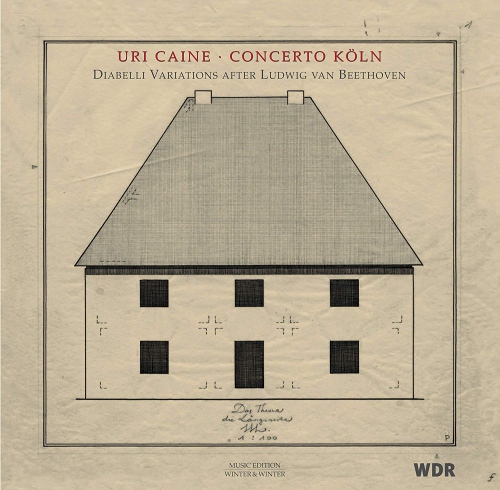When Anton Diabelli, wishing to promote himself as a publisher, commissioned many of the best-known composers of his time to write a variation on a theme composed by himself in 1819 in order to publish a score with all of them, he couldn't possibly imagine that the greatest of them all, Ludwig van Beethoven, was going to write not one, but thirty-three variations, probably encouraged by his wish to keep his name apart from his minor colleagues or, who knows, by his eagerness to undertake an in-depth search of the possibilities of a theme that, initially, he scornfully mocked for it's 'Schusterfleck' ('cobbler's patch'). In the end, in his Diabelli Variations Beethoven turned the banal (that tiny waltzlet serving as the starting point) into transcendent. From hardly nothing he built a whole which overwhelms us with it's greatness. It's a work full of paradoxes, winks, double meanings, but it's also a contested work, not easily understandable, complex and experimental. Planned as a building with superimposed layers, seemingly heterogeneous and without an apparent connecting thread, it looks the perfect testing ground for a creative artist - like Uri Caine. In his hands you forget the quasi-monotonal character of the piece, and we remain drawn and surprised by it's continuous feinting.
Release date:
March 20, 2020
Label:
Install our app to receive notifications when new upcoming releases are added.

Recommended equipment and accessories
-

Ortofon 2M Blue Premounted
Mounted on the SH-4 Black Headshell, this setup delivers exceptional clarity, dynamic range, and accurate sound reproduction.
-

Cartridges - Top Picks
A selection of turnatble cartridges that provide great performance and sound quality
-

HumminGuru: Ultrasonic Vinyl Record Cleaner
Advanced ultrasonic technology with customizable cleaning cycles and a large tank capacity to thoroughly remove dust, dirt, and contaminants
-

Turntables - Top Picks
A selection of reliable record players you can buy today, for every budget
-

Audioengine A2 Plus
Precision-engineered 2.75-inch woofers and a 0.75-inch silk dome tweeter, featuring built-in DAC and Bluetooth connectivity for seamless integration.
Featured Upcoming Vinyl
-

Hurts Happiness [2xLP]
Sony UK
December 12, 2025 -

Khruangbin The Universe Smiles Upon You ii
Dead Oceans
December 5, 2025 -

Jeremy Allen White Springsteen: Deliver Me From Nowhere Soundtrack [2xLP]
Columbia Records Group
December 5, 2025 -

Dan Whitlam Strangers Again
Needwant
February 13, 2026 -

Field Music Field Music (20 Year Anniversary Edition) [2xLP]
Memphis Industries
December 12, 2025 -

Fields Of The Nephilim Dawnrazor [2xLP]
Beggars Banquet
December 12, 2025 -

Dust Sky Is Falling
Kanine Records
December 5, 2025 -

Badge Epoch Furry Worried Ape
Telephone Explosion Records
December 5, 2025 -

Pink Floyd Wish You Were Here (50th Anniversary) [3xLP]
Legacy Recordings
December 12, 2025 -

Ugly Kid Joe Menace To Sobriety
Deko Music
December 19, 2025 -

Melanie C Sweat
Red Girl Media Ltd.
May 1, 2026 -

Poppy Empty Hands
Sumerian Records
January 23, 2026 -

Ratboys Singin' to an Empty Chair [2xLP]
New West Records
February 6, 2026 -

PONY Clearly Cursed
Take This To Heart
February 13, 2026


















